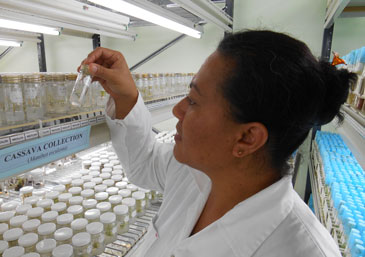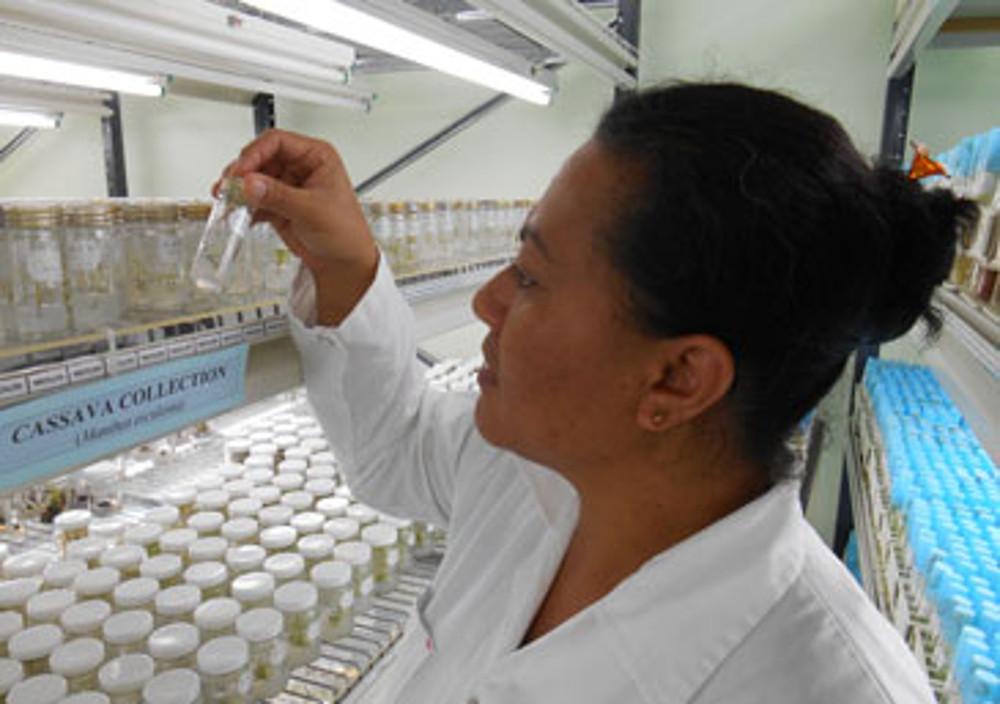 Efforts by the Pacific Agricultural Plant Genetic Resources Network (PAPGREN) and the Pacific Community (SPC) to conserve genetic material and halt the loss of biodiversity have been recognised at regional consultations organised by the Food and Agriculture Organisation of the United Nations (FAO).
Efforts by the Pacific Agricultural Plant Genetic Resources Network (PAPGREN) and the Pacific Community (SPC) to conserve genetic material and halt the loss of biodiversity have been recognised at regional consultations organised by the Food and Agriculture Organisation of the United Nations (FAO).
Ten countries attended the recent event in Nadi, Fiji, to update the state of the Pacific region’s biodiversity and better understand national and regional priorities related to biodiversity.
Urbanization, rural development, forest degradation and invasive species were identified as factors contributing to a loss of important agro-biodiversity and traditional knowledge which was occurring at alarming rates in many parts of the Pacific region.
“Our efforts over the past 10 to15 years, following the formation of our Pacific Agricultural Plant Genetic Resources Network and SPC’s Centre for Pacific Crops and Trees (CePaCT), have been tremendous in ensuring the conservation and sustainable use of our genetic materials,” Vice-Chair of the 16th Session of the Commission on Genetic Resources for Food and Agriculture for the Pacific region, William Wigmore, said.
“We need to conserve and use our biodiversity sustainably to cope with the many recent changes and impacts of climate change and disasters on biodiversity,” Mr Wigmore added.
The participants heard how a major concern in the Pacific is a “crisis” in non-communicable diseases, due in part to traditional foods being replaced by high-fat imported foods.
Pacific Island countries and territories are home to a range of endemic and untapped biodiversity that could help to sustain food security and healthier food choices.
CePaCT was recognised at the event, given its role in assisting countries and territories to conserve their genetic resources, and to provide access to the region’s diversity, including staple crops such as taro, yam, sweet potato, banana, cassava and breadfruit.
“Consultation is vital to realise the importance of all components of biodiversity relevant to food and agriculture, including forestry, aquatic genetic resources and associated biodiversity including soil micro-organisms, pollinators, insects, and other plant species,” Mr Wigmore said.
Also discussed were challenges related to the collection of baseline data, as well as monitoring and assessment in a multi-sector approach to sustainable biodiversity use and conservation.
Plant Production and Protection Officer at the FAO Sub-regional Office for the Pacific Islands, Dr Viliami Fakava, acknowledged the participation and contribution of countries to the State of the World’s Biodiversity for Food and Agriculture report.
Media contacts:
Salome Tukuafu, SPC Information and Communications Management Officer, [email protected] or +679 337 0733
William Wigmore, Director Research, Cook Islands & Sth West Pacific member on FAO Commission; [email protected]
Valerie S Tuia, SPC Genetic Resources Coordinator, [email protected]
About CePaCT:
The Pacific Community’s Centre for Pacific Crops and Trees (CePaCT) is an internationally recognised genebank established to assist Pacific Island countries and territories to conserve the region’s genetic resources, and to provide access to the diversity. Conservation is the core business of the centre, with priority given to the region’s staple crops: taro, yam, sweet potato, banana, cassava and breadfruit. Situated in Suva, Fiji, the centre houses over 2,000 accessions. The taro collection is particularly unique, being the largest collection of taro diversity globally. CePaCT works in collaboration with Pacific Island countries and territories, and receives generous support from development partners: the Australian Government, European Union, Food and Agriculture Organization, French Pacific Fund, Global Crop Diversity Trust, New Zealand Aid Programme and the United States Agency for International Development (USAID).
